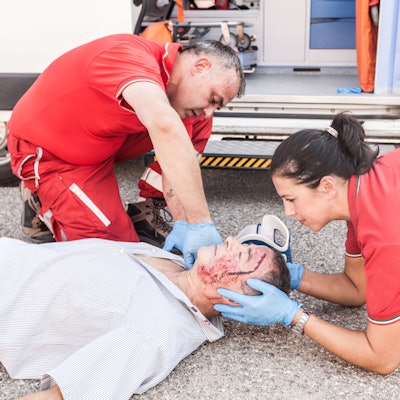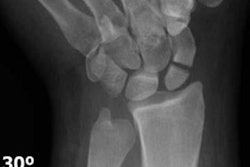
Using whole-body CT to evaluate patients with normal physical presentation following a motor vehicle crash did not prompt any changes in their medical care in a new study, published online May 28 in Radiology. The findings question the value of the imaging technique in some emergency trauma cases.
The use of whole-body CT to evaluate trauma patients has become increasingly routine in recent years, yet controversy persists over appropriate patient selection. Advocates of the widespread use of whole-body CT point to studies demonstrating its potential to reduce mortality compared with standard techniques for patient evaluation, whereas skeptics suggest that this benefit may only apply to the most severely injured patients, noted lead author Dr. Dihia Belabbas and colleagues from University Hospital of Rennes in France.
To investigate the question further, the group examined data from 93 emergency patients who underwent whole-body CT between August 2016 and July 2017 after being involved in motor vehicle crashes. The criteria included a score of "normal" on the Glasgow Coma Scale and on a physical examination of the chest, abdomen, and pelvis, as well as at least one high-risk factor concerning the circumstances of the accident, such as being in a high-velocity crash or not wearing a seatbelt.
The researchers found that 78% of the whole-body CT scans revealed no injuries at all. And although whole-body CT did uncover at least one previously unidentified injury in 12% of the patients, none of these injuries was associated with additional complications or required injury-specific treatment. One of these patients received a follow-up imaging exam for a large lung contusion, but the results of the exam did not prompt further medical care.
Overall, the patients' chance of having a clinically unsuspected injury to the chest, abdomen, or pelvis revealed on whole-body CT was low, according to the authors. One factor did have a high positive predictive value for unsuspected injury on whole-body CT: the absence of a seatbelt. In addition, whole-body CT of the study population showed two fractures that, although not requiring special treatment, were missed on physical examination -- indicating further potential utility of the technique.
"A secondary benefit of whole-body CT is to increase the physician's level of certainty and overcome potential personal bias or examination skill deficiencies, making evaluation more accurate and effective," Drs. Felipe Munera and Anthony Durso from the University of Miami Miller School of Medicine wrote in an accompanying editorial.
Though whole-body CT has demonstrated a potential to reduce mortality and time to diagnosis, the results of the current study highlight the continued need for better triage tools to determine which trauma patients would benefit most and which might not benefit at all, Munera and Durso noted.
"No one wants to expose patients to unnecessary risk and imaging, but in the trauma patient, we also do not want to delay diagnosis of clinically significant injury," they wrote.




















